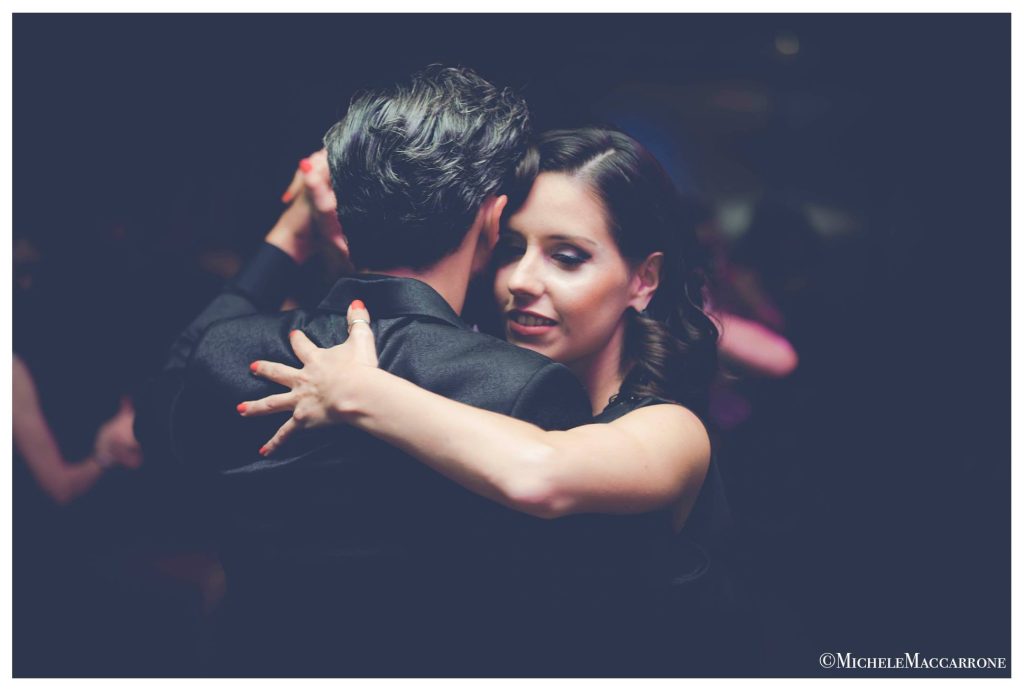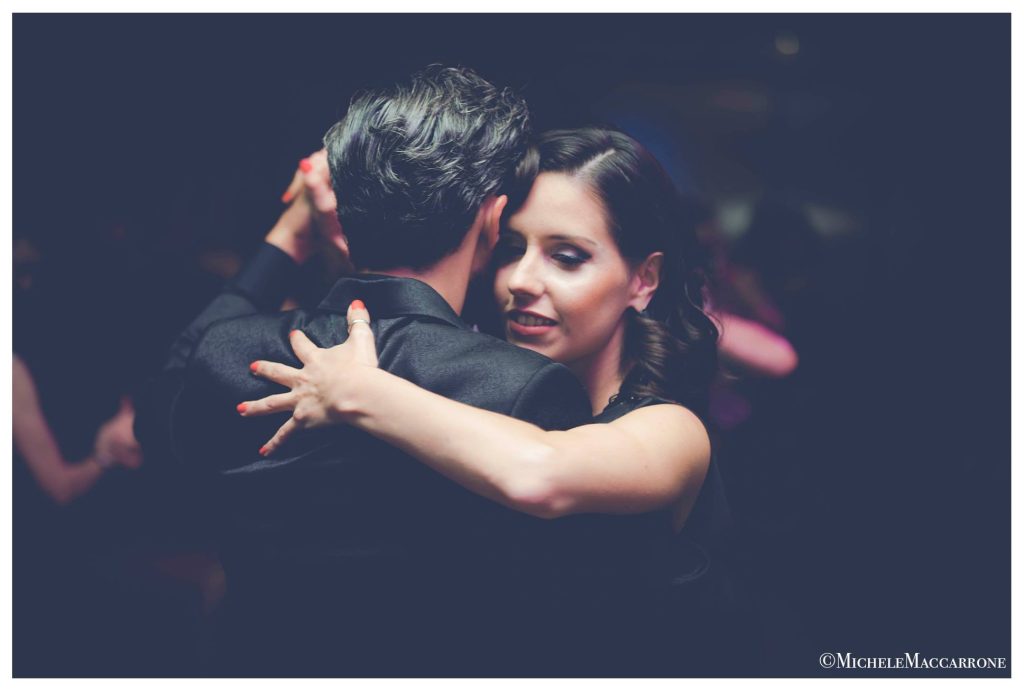
When did you start to dance tango, where and why?
C-I have my first contact with tango when I was 5 years old.
My parents used to take lessons with Olga Besio & Gustavo Naveira in a milonga called “Cuartito Azul”. I spent the nights playing as a child around the dance floor, but sometimes I practiced the steps that my father learnt during the class with him.
Who were your first teachers, and then the most important inspiration/ influences.
C-My first teacher was Olga Besio. I took several lessons during a lot of years in La Galeria del Tango with her.
When I started dancing with Diego, we studied with a lot of milongueros. They taught, not only wonderful combinations, but also a combination criteria. You learned the step, but you also learned part of they history that you might not have lived.
There were a lot of dancers and couples that I admired at the time: Roberto & Vanina, Guillermina Quiroga, Pablo Verón, Geraldine & Javier, Gustavo & Giselle, Natalia Hills…
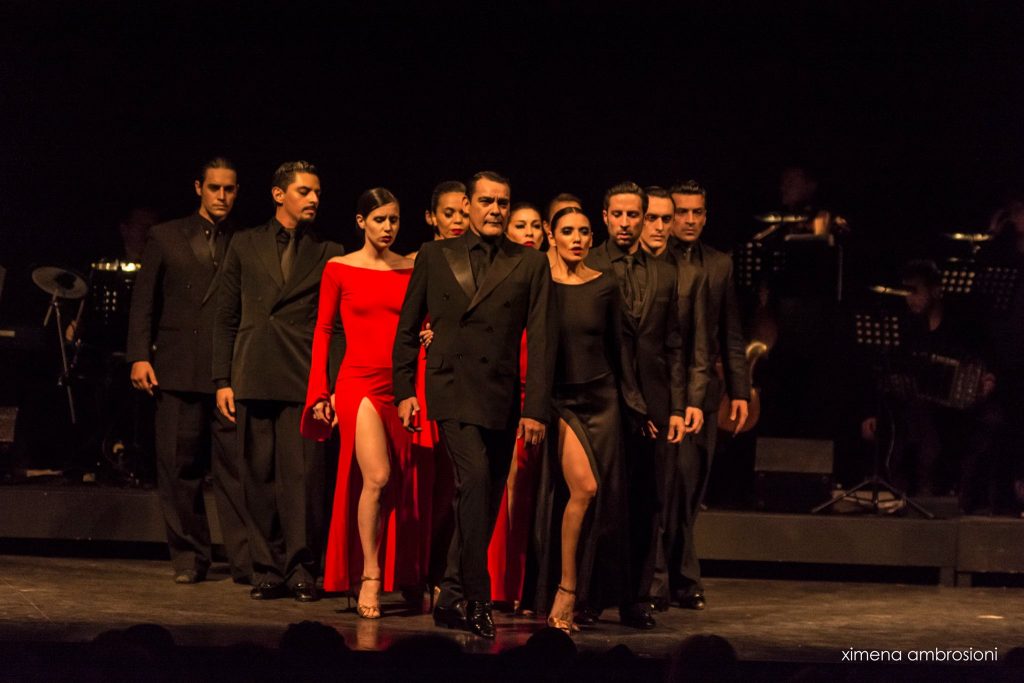
Did you attend a special scene – group of people. Located where in BA?
C-We have worked a lot of years in several tango shows of Buenos Aires. We were part of the stable cast of Esquina Carlos Gardel during 7 years.
Also in 2013, we were co-directors and co-producers with Ariadna & Fernando and Martín & Maurizio of the “ La Evasión” a dance-theater play. We travelled with the company and was a great experience!
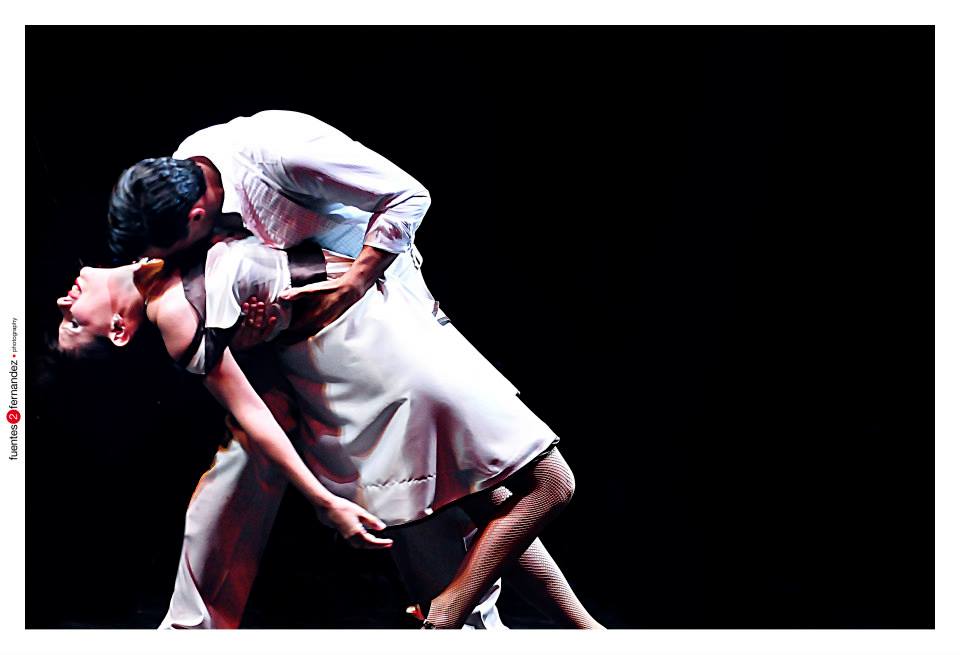
What neighborhood did you grow up in? Was tango a part of your culture in childhood?
C-I grow up in Palermo’s neighborhood. Tango was part of my daily life: my parents listened tango in the radio, took lessons and my mum loved to see the old tango films, where Niní Marshall o Libertad Lamarque acts.
What has been your main interest in tango?
C-Try to dance it well.
Search the aesthetic code that represents me.
Find my way, develop not only the form but the substance.
Learn and teach that you have to experience your own process. Teachers could give you tips, reasons, tools, and then you have to create your own tango. As a personal puzzle.
Understand that this dance has no end.
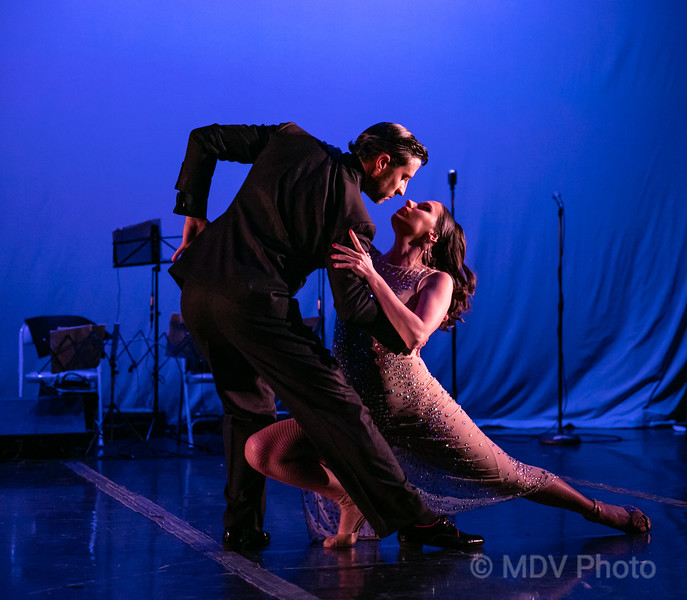
What is your main interest in tango now?
C-Enjoy it! Keep learning, keep looking for new things, new challenges. And share with the students the one way trip that tango is.
Why is tango so popular?
C-Because tango makes us equal. And at the same time shows us that we’re unique.
In a world that strives to despersonalize us, where relationships are increasingly through screens and demands how we have to look or feel, tango becomes an oasis: you hug an stranger and you connect with what you feel.
There’s nothing else, and that’s pure magic.
What do you think of the future of tango worldwide?
C-I think the pandemic was a hard blow for the tango communities. Let’s hope we can return to the big events.
As for the dance itself, I think the new tango generation is very talented but they should focus on becoming more personal, putting aside the championship-winning formulas. There are fewer tango couples: instead, there are people who get together to do a job. A tango couple requires time and process. And crisis and research. Then, you have a story to tell when you stand up to dance.
Is there a difference between tango in Buenos Aires and Europe? Or other places?
C -Nowadays I think the difference is less noticiable. Globalization and technology have shorted distances, also at this level. People travel to take classes, they have videos on Youtube, there ‘re milongas everywhere…
Have you met tango in other places in the world that impressed you for a reason?
C -I’m always impress when I arrive to another country and, maybe we’re in the other side of the world, and you see the peolpe tryng to create and reproduce our idiosyncrasy. That, amaze me. People emulating a piece of our culture: eating empanadas, translating lunfardo lyrics, putting emphasis on representing the argentinian tango scene. It’s incredible.
Is tango an Argentine expression or is it an urban global expression?
C– I believe that born as an argentinian expression, but in these days, those people, those communities that felt in love with it, have taken it to their cities, they have turned into a global phenomenon. World Heritage, we all have to take care of it.
What do you love about tango?
C-The mistery, the magic, the complexity, the intimate, the internal code. Two who may not know each other or speak the same language, hug each other and can share a 3-minutes dialogue. How could you resist that?
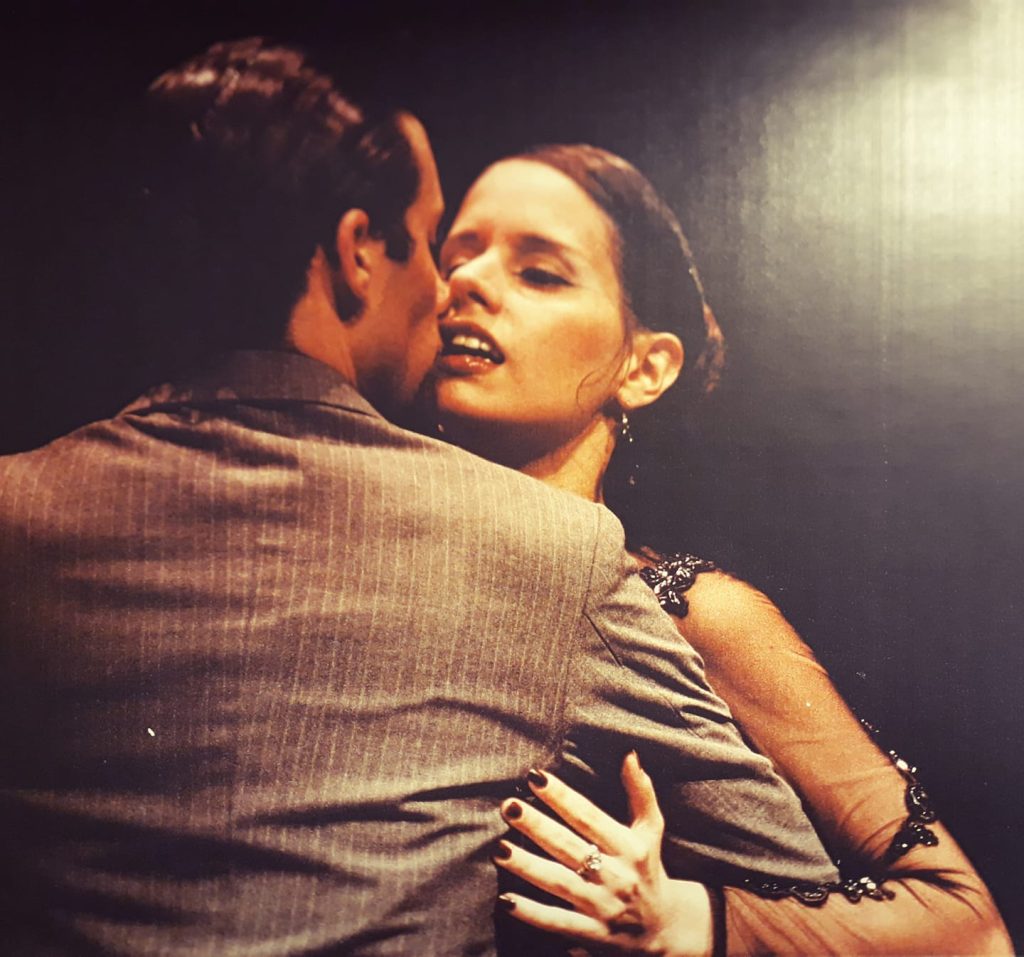
What is your favourite tango (tema)?
C-That’s a hard one, haha! It depends on the mood of my day!
But one tango that makes me stand up and dance in any mood it’s El Flete.
Who are your biggest inspirations also outside of tango.
C –Well, each of the ones I named above were inspirational. Outside of tango I wil always admire Fred Astaire & Ginger Rogers, Gene Kelly & Cyd Charisse. They were amazing, of another world!
